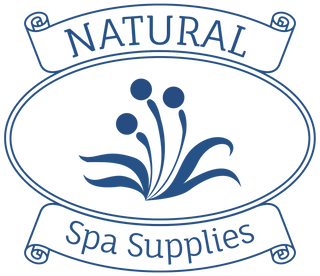Did you know that houseplants can powerfully detox the household environment? Mrs Everybody has been finding out about her own plants and how they have been silently helping her over the years.
Many new houses are so well insulated that toxins can build up inside them. It is not too much of a problem for Mrs Everybody as she has fireplaces in each room and wooden floors so there is plenty of air circulation. Brrr! Not so long ago, it was considered essential to air rooms everyday by opening the windows, but this healthy habit has gone by the wayside.
In the last decades, new polluters have appeared in households in the form computers, printers, refrigerators, foam sofas and mattresses etc. Humans and animals also release volatile organic compounds such as ethyl alcohol, acetone, methyl alcohol and ethyl acetate and of course carbon dioxide. Commercial cleaning products and cosmetics add to the toxic levels in the home. Don’t worry, house plants can deal with ALL of these toxins.
You can think of your home with its living creatures and your plants as your very own biosphere. The plants that you grow transform specific toxins and you really can breath garden-quality air in your indoor habitat. Only you know about the construction and furnishing of your house and what products you use for cleaning, washing and bathing and you will easily find the best plants for you needs.
Studies conducted for NASA in the early 1980s at the John C. Stennis Space Center in Mississippi provided evidence that houseplants can improve indoor air quality. After more than ten years of extensive research (both laboratory and real-world), there is a basic understanding of how plants function to remove indoor pollutants. Research conducted by Wolverton Environmental Services, Inc. and supported by the Plants for Clean Air Council in Mitchellville, Maryland, continues to expand on the research begun at NASA.
How do plants clean the air?
Plants use two well known processes to move chemicals in the air to their roots: Leaves absorb certain chemicals in the air and transport them inside plant tissue down to the roots – during this process toxins are transformed into something useful for the plant. Also plants pull air down around their roots as moisture is emitted from leaves during transpiration. As the air circulates down through the soil, toxins are drawn into the soil. Microbes then break these toxins down into nutrients for absorption through the roots.
A List of Pollutants and our Who’s Who of Air Cleaning Plants:
Ammonia
This substance is found commercial cleaning products, commercial streak-free surface cleaners, oven cleaners, window cleaners and photocopiers. Cleaners contain up to 10% ammonia. It can cause rhinorrhea (runny nose), scratchy throat, chest tightness, cough, dyspnea (shortness of breath), and eye irritation. Just to remind you, I really can do just about all my household cleaning with liquid made from soapnuts and hemp oil soap, both fully natural products, containing no toxic chemicals.
Every home office and kitchen should be crammed with the Lady Palm, King of Hearts, Lily Turf, Lady Jane, Florist’s Mum, Peacock Plant, Dendrobium Orchid, or Tulips. These plants work overtime on ammonia and cleverly transform it into nitrogen on which the plants thrive. Plants are so beautiful and they have such a positive psychological effect, who wouldn’t want to work in an indoor garden?
Formaldehyde
This chemical is the most prevalent household toxin. It off-gasses from foam mattresses, sofas, gas ovens, adhesives, paints, no-iron clothing, varnishes, resins, plywood, fiberboard, particle board, foam insulation, upholstery, mobile homes, hair perm and straightening products, bin bags, medical disinfectants, paper towels and facial tissues. Now you knew this was coming – why not use a sponge instead of paper towels? Symptoms of formaldehyde toxicity include eye and nose irritation, asthma, menstrual problems, headaches, skin rashes. Leukemia and other cancers are linked to this toxin.
If you live in a mobile home, stay in a caravan, own a modern sofa or mattress, then you might like to room-share with the following plants: Boston Fern, Florist’s Mum, Gerbera Daisy, Dwarf Date Palm, the Janet Craig, Bamboo Palm, Kimberley Queen Fern, Rubber Plant, English Ivy. There are lots more plants that like to absorb formaldehyde and all of these lists could be much longer.
Xylene and Toluene
These two solvents are often grouped together as they are found in similar products and have similar adverse heath effects. They are found in adhesives, caulk (the sealant around the bath, sink and shower), floor coverings, paints, photocopiers, whiteboard markers (xylene), stains and varnishes cleaning agents, nylon products, synthetic fragrances, cleaners, cosmetics and nail varnish.
These solvents cause irritation of the upper respiratory tract and eyes, sore throat, dizziness, and headache, decrease resistance to respiratory infection, they cause CNS dysfunction, attention deficits, cardiac arrhythmia as well as minor cranio-facial and limb anomalies and developmental effects in the children of pregnant women who have been exposed to high levels of toluene in the atmosphere.
You might think it odd that house plants can deal with these ‘modern’ chemicals, but formaldehyde, benzene and xylene have structures similar to components found in tannic and humic acids, acid formed through the decomposition of plant matter, so the microbes adapt to biodegrade these artificial chemicals also.
It helps to understand, that most houseplants grow naturally in tropical climates, where the climate is wet and warm. The plants must find ways to easily and quickly break down organic matter to absorb all possible nutrients before they are washed away and soil microbes do all this complicated work.
The Areca Palm, Dwarf Date Palm, Moth Orchid, Dumb Cane, Dragon Tree, Dendrobium Orchid, King of Hearts, Kimerberly Queen Fern and other solvent loving plants are the best helpers in your bathroom, kitchen, home office and garden office.
Mold and Bacteria
Common symptoms of mold exposure include nasal and sinus congestion, runny nose, eye irritation, such as itchy, red, watery eyes, respiratory problems, such as wheezing and difficulty breathing, chest tightness, cough, throat irritation, skin irritation, such as a rash, headache, sneezing / sneezing fits.
To reduce mold levels choose English Ivy, Dracaena, Snake Plant /Mother-in-Laws Tongue, Boston Fern, Reed palms, Dwarf Date Palms, Areca Palms, Bamboo Palms and the Peace Lily.
If you doctor has told you to remove houseplants due the natural presence of molds and bacteria in the soil, then you might consider growing your plants hydroponically – that is using other growth mediums such as pumice, expanded clay aggregate, rock wool, or coir rather than soil. Such plants are watered with a nutrient solution. Actually if soil grown plants are well cared for (not under or over watered), they won’t support unhealthy molds and they will work very well at reducing airborne molds. Hydroponically grown plants will still work just as hard for you. In fact the NASA experiments mentioned above used hydroponic methods.
Recent findings show that plant-filled rooms contained 50 to 60 % fewer airborne mold and bacteria than rooms with no plants.
As a general guide, two or more medium to large plants (14"-16" containers) per 100 square feet of area are recommended. Of course, more plants and larger plants would certainly increase effectiveness and provide an even greater sense of well being.
While this is not an extensive list and probably every plant purifies the air in some way. Mrs Everybody will enjoy caring for her clever plants and their microbe friends even more now.
Please note: If you have cats or dogs, do check which ones are toxic to them so you don’t buy the wrong ones!
Further Resources
I have included a link to a chart from Wikipedia so that you can see the key information, including animal toxicity at a glance.
If you would like to see much greater detail and tests on a more household toxins, then here is a pdf file of the original research: Interior Landscape Plants for Indoor Air Pollution Abatement, by B.C. Wolverton




